What Is BrowserLeaks? IP & WebRTC Leak Test Explained
Take a Quick Look
BrowserLeak will reveal if your VPN or proxy is exposing your DNS requests to ISPs. Check now to safeguard your privacy and keep your online activity hidden with AdsPower.
Even with a VPN or private browser mode, your online identity can still leak through invisible gaps — like your IP address, WebRTC data, or browser fingerprint.
That's where BrowserLeaks comes in. It's a set of privacy tests designed to show you exactly what your browser is revealing.
If you've ever wondered:
"Is my VPN really hiding my IP?"
"How do I know if WebRTC is leaking?"
"Can sites fingerprint me even if I clear cookies?"
…this guide is for you.
We'll cover how BrowserLeaks works, what it detects, how to fix issues (including using an anti-fingerprint browser like AdsPower), and which BrowserLeaks alternatives can help.
Tip: Open BrowserLeaks in another tab so you can test while reading.
What Is BrowserLeaks?
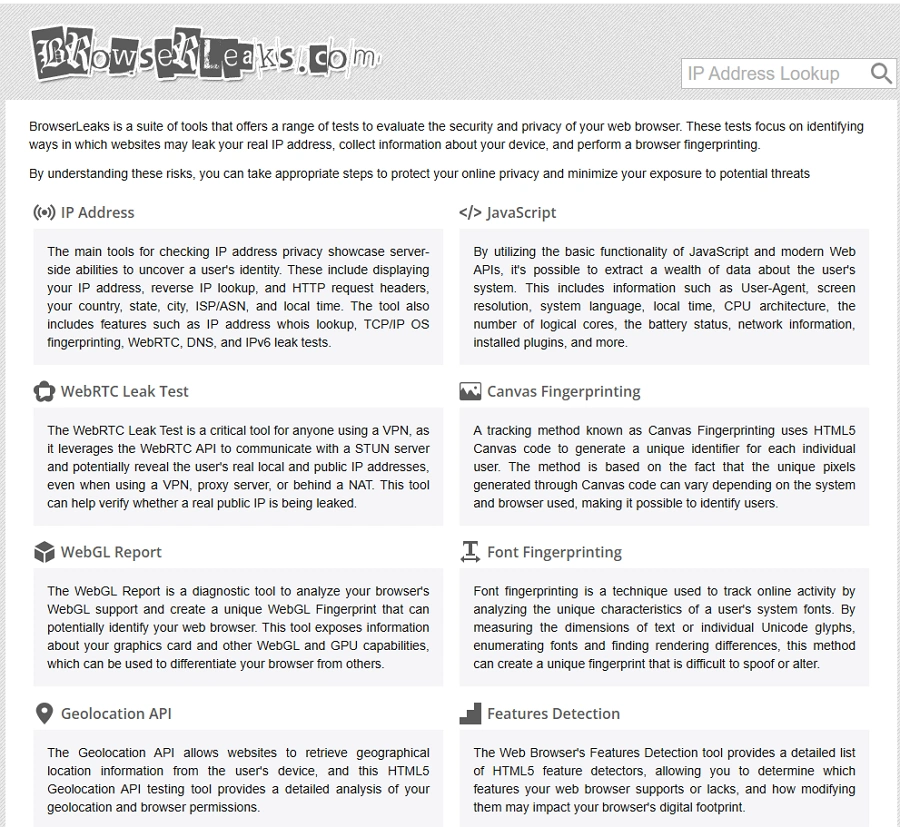
Similar to other online free IP lookup and fingerprint testing tools, BrowserLeaks can help to check your online identity and minimize your exposure to potential threats. But it is not like most online privacy tools. When you land on its homepage, you won't immediately see your IP address or fingerprint score.
Instead, it's an index of multiple testing tools, each designed to check a specific privacy risk. You click into individual sections to run tests — such as IP, WebRTC, Canvas, or Geolocation.
Key points about BrowserLeaks:
- Created for privacy-conscious users and cybersecurity testing.
- Covers more than 20 separate browser data points.
- Completely free to use — no sign-up required.
This modular approach means you get deep control over what you test. But it also means you need to know which tests matter most for your situation.
How BrowserLeaks Works — Testing Your Browser Privacy
BrowserLeaks uses scripts to collect what your browser naturally reveals when loading a page.
It doesn't "hack" your system — it simply displays public data that websites can already see.
Common methods it uses:
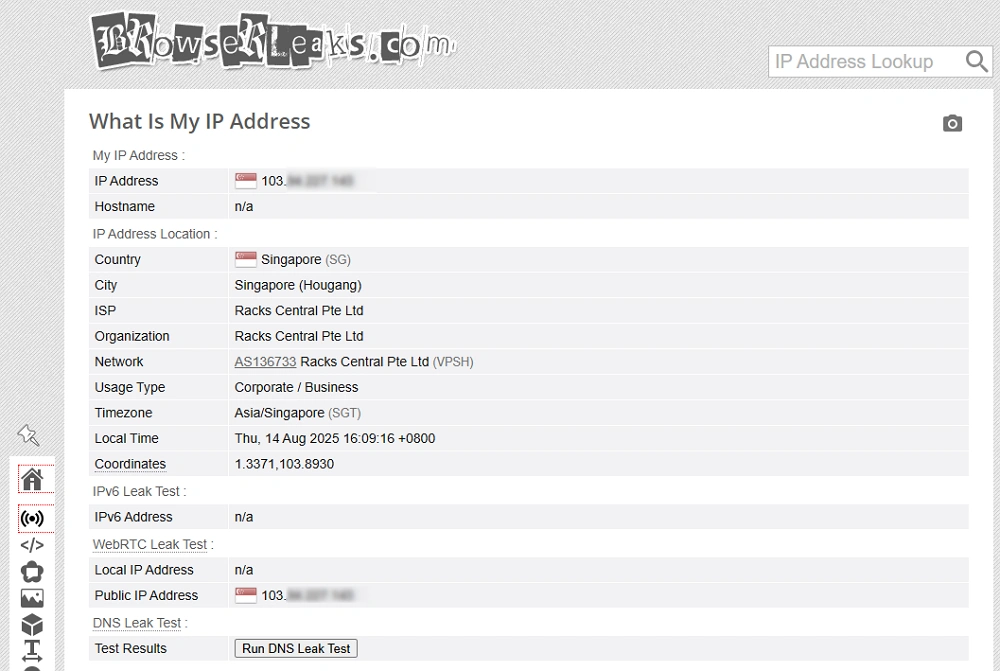
- IP detection via HTTP headers and WebRTC APIs.
- Fingerprinting through Canvas, WebGL, AudioContext, and Fonts.
- Environment scanning like timezone, language, geolocation, and feature support.
It's important to understand: BrowserLeaks does not store your test results. Everything runs in real time on your side.
Is BrowserLeaks Safe and Legit?
Yes — BrowserLeaks is safe to use. It's a read-only testing site.
- Legit? Yes, it's widely used by security researchers, ethical hackers, and privacy advocates.
- Safe? It won't install malware or request downloads.
- Caution: Some tests (like Geolocation) may ask for permission — you can decline unless you specifically want to test those features.
Remember: BrowserLeaks is only a mirror. It shows what's already visible to websites — the real security fix comes from what you do after.
What BrowserLeaks Detects Your Identity?
BrowserLeaks offers over 20 tests. The most important for most users include:
1. BrowserLeaks IP Test
- Shows your public IP address, ISP, and approximate location.
- If you're using a VPN or proxy and still see your real location, that's an IP leak.
2. BrowserLeaks WebRTC Test
- WebRTC allows real-time communication (video calls, file sharing) in browsers.
- Problem: It can bypass your VPN and reveal your real IP to websites or peers.
- If the WebRTC test shows your home IP, you have a WebRTC leak.
3. Canvas Fingerprinting
- A hidden tracking method using graphics rendering differences.
- Very difficult to block without changing browser settings or using specialized tools.
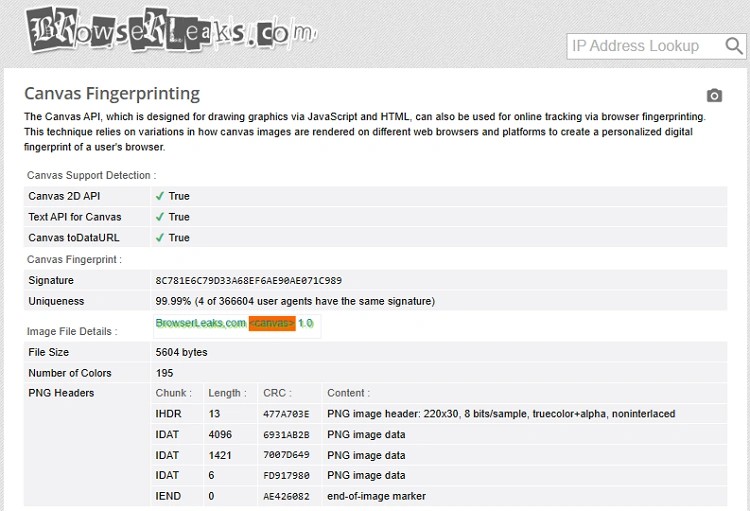
4. WebGL Fingerprinting
- Similar to Canvas, but it uses 3D rendering data to identify your system.
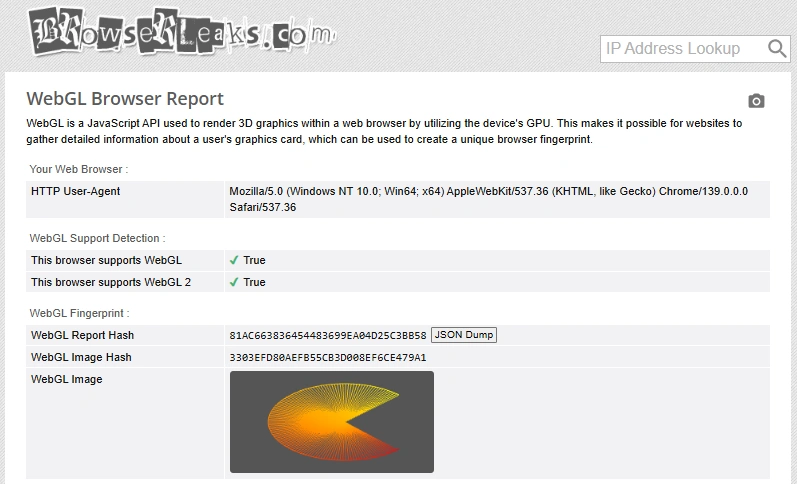
5. DNS Leak Test
- Check whether your browser is secretly sending DNS requests to your ISP's servers, exposing your online activity despite using a VPN or proxy.
6. Font Fingerprinting
- Lists installed fonts to profile your device.
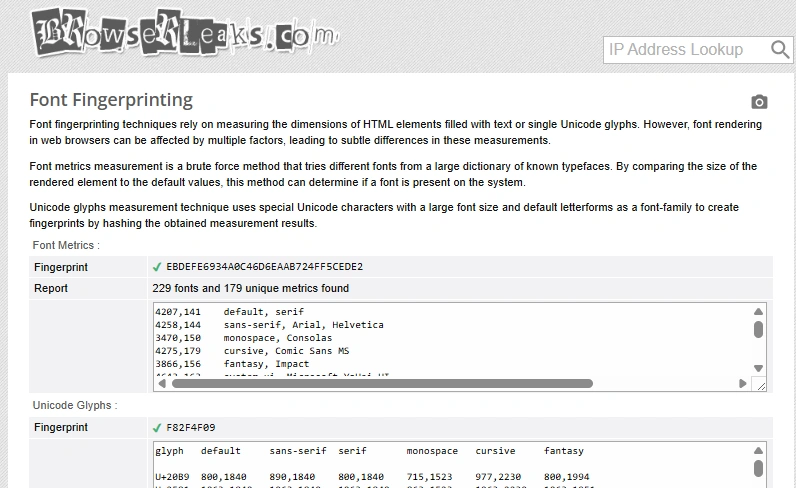
7. HTTP Headers, Language, Timezone, and Geolocation
- Reveals where you are, what system you use, and other environmental details.
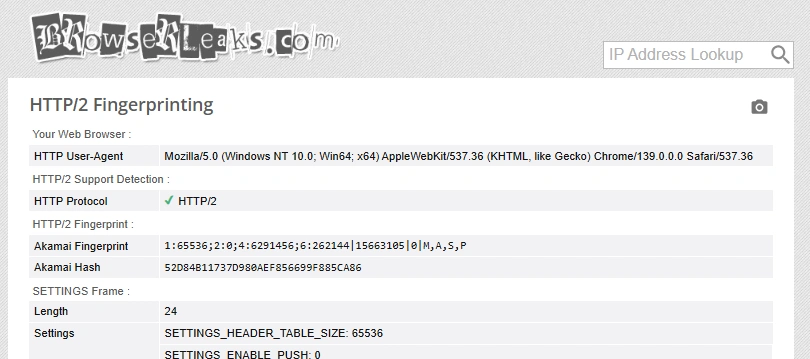
8. Advanced Tools
- SSL/TLS Client Test, Content Filters, and JavaScript feature detection.
Ways to Fix Privacy Exposures Found in BrowserLeaks
Once you've run your tests, you might find IP leaks, WebRTC leaks, or a high fingerprint uniqueness score.
Here's how to address them:
1. Stop IP Leaks
- Use a trusted VPN with leak protection.
- Avoid free VPNs — they often have weak DNS/IP handling.
2. Block WebRTC Leaks
- In Chrome/Edge: Use extensions like WebRTC Network Limiter.
- In Firefox: Go to about: config and set media.peerconnection.enabled to false.
3. Minimize Fingerprinting
- Disable unnecessary browser features.
- Use privacy extensions like uBlock Origin or Privacy Badger.
4. Use an Antidetect Browser — AdsPower
If BrowserLeaks reports fingerprint leaks, your standard browser may not be enough.
AdsPower is an anti-detect browser that lets you:
- Create multiple isolated browsing profiles with unique fingerprints.
- Adjust Canvas, WebGL, AudioContext, and font settings to appear different to trackers.
- Set up environments that pass fingerprint checks on BrowserLeaks.
Example to customize fingerprint and re-test:
a. Run BrowserLeaks tests in your current browser.
b. Note any fingerprint or WebRTC leaks.
c. Set up an AdsPower profile with custom fingerprint settings (Kernel version, OS, UA, WebRTC, Timezone, Location, etc.)
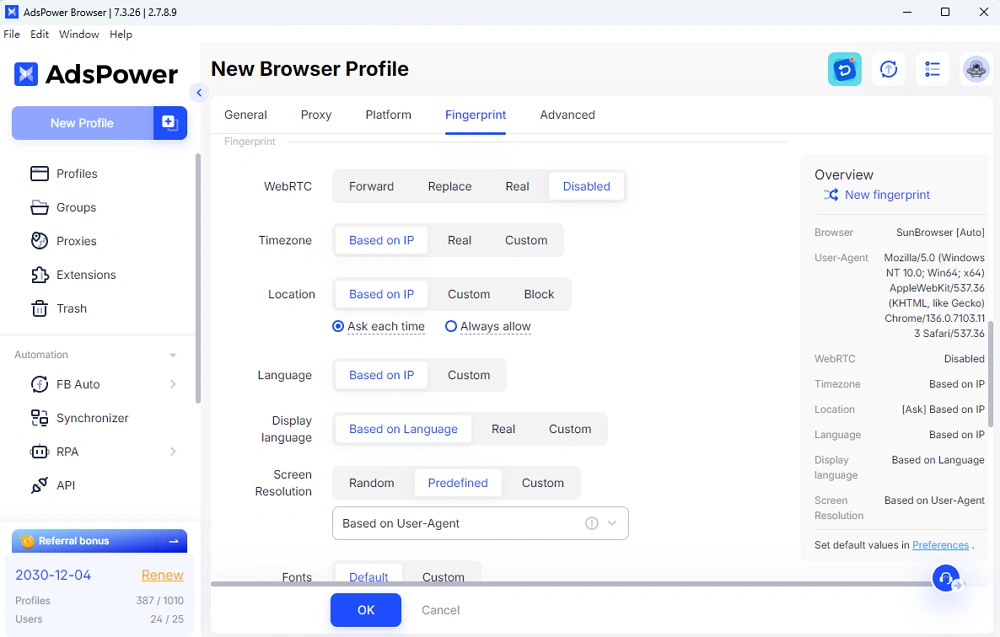
d. Open the profile and re-run BrowserLeaks — see if the leaks are gone.
As the following screenshot shows, "No Leak" means that you are operating in a safe environment.
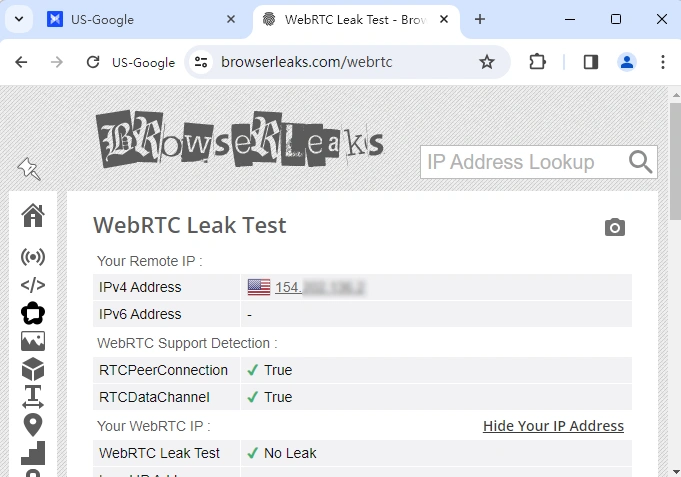
👉 Try AdsPower for free and test your new secure setup immediately.
Best BrowserLeaks Alternatives to Test Your Privacy
While BrowserLeaks is comprehensive, you may want other perspectives:
- Whoer.net — Displays most results in one dashboard, so you don't need to test one by one.
- AmIUnique — Compares your fingerprint against a global database.
- BrowserScan — Offers general and detailed fingerprint component analysis, including authenticity percentage.
- IPhey — Simple IP and fingerprint test for quick checks.
Suggestion: Use more than one tool to confirm results — sometimes one site catches a leak, another misses.
Final Thoughts — Test, Detect, Protect
BrowserLeaks is one of the most detailed privacy testing tools available.
It won't fix your leaks — but it shows you exactly where to focus your efforts.
Key takeaway:
- Test regularly with BrowserLeaks or other online detection tools.
- Fix issues using VPN settings, WebRTC blocking, and fingerprint control tools like AdsPower.
- Re-test until you see no leaks.
Run BrowserLeaks now and start securing your online identity before your next browsing session.

People Also Read
- What is BrowserScan? Check Fingerprints, IP Leaks & Stay Private
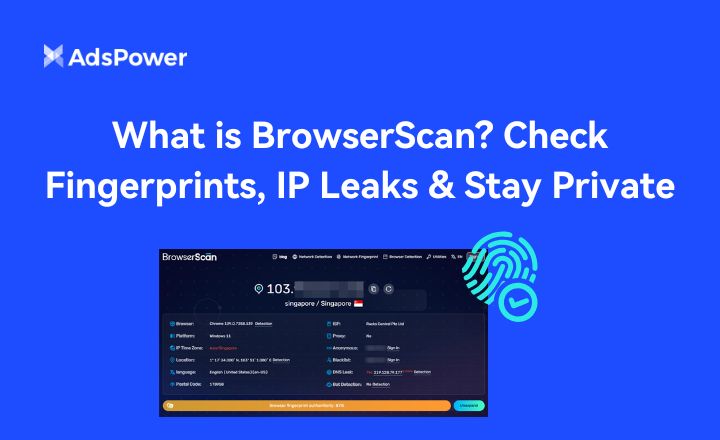
What is BrowserScan? Check Fingerprints, IP Leaks & Stay Private
What is BrowserScan? Find out how it detects IP leaks & unique fingerprints, plus tips for privacy with AdsPower.
- How Does AmIUnique Work and Is It Safe? Everything You Need to Know
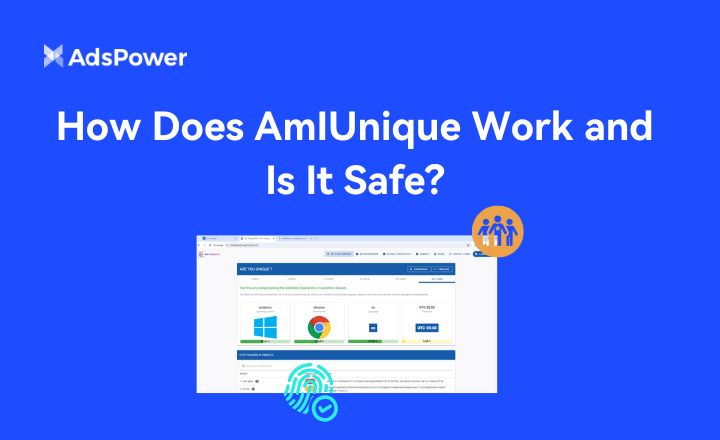
How Does AmIUnique Work and Is It Safe? Everything You Need to Know
Discover how AmIUnique reveals your browser fingerprint, whether it's safe, the best alternatives, and expert tips to protect your online privacy.
- Pixelscan Review 2025: Features, Uses & Best Alternatives
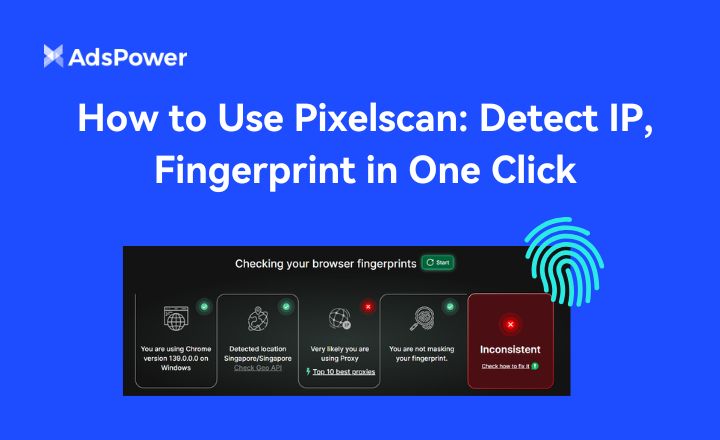
Pixelscan Review 2025: Features, Uses & Best Alternatives
Pixelscan lets you check your IP and fingerprint; discover the best alternatives of Pixelscan to enhance security and privacy online.
- How to Use Whoer to Check Your IP Address and Achieve 100% Anonymity

How to Use Whoer to Check Your IP Address and Achieve 100% Anonymity
Learn how to use Whoer to check your IP address, detect leaks, and boost anonymity. Step-by-step guide, privacy tips, and best Whoer alternatives
- What is IPhey and How to Test Your Browser Fingerprint
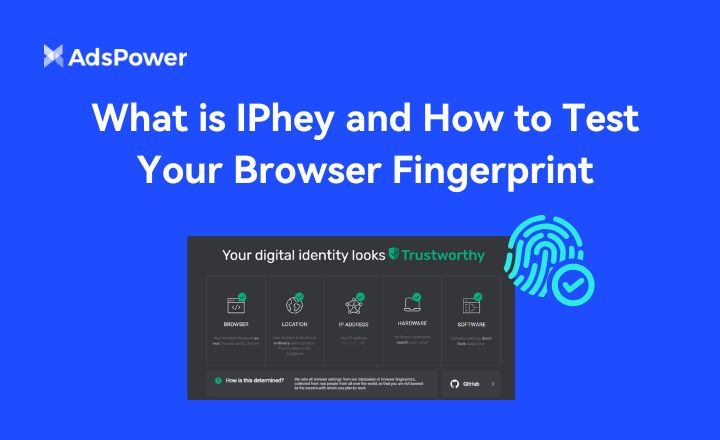
What is IPhey and How to Test Your Browser Fingerprint
Explore what is Iphey and try to test your browser fingerprint with IPhey testing tool here. Then, improve the cleaness of your fingerprint


